Tiger Moth
At Canna House I showed our group the Hebridean moth collection – mostly specimens from Canna and Barra – in cabinets in the entomology room. We took turns to crowd into the little space, jostling with butterfly nets, a moth trap held together with large coloured paper clips, rows of diaries for every year from 1924, scores of butterfly books and field guides, the complete works of Freud and Jung and nine different books on UFO’s (maybe there is something really special about Canna?)
At first glance and even after overcoming the sort of distaste that can be produced by looking at lifeless insects, trapped and pinned, the specimens seem small and unremarkable, the collection hardly spectacular. It was the drawer of Tiger Moths that elicited real delight. They really are fabulous creatures, with large orange bodies, dark brown spots on parchment-white forewings and dusty vermilion hind wings. I had worked on my own in that little room for three days in June. Being there again, but this time with other people, widened the gulf between looking at cabinet specimens and seeing moths and butterflies out in the landscape; the gap between the lab and the field – between the studio and the world?
The next day we sailed to Mingulay – beautiful island, inhabited only by huge colonies of sea birds (who share it for a few weeks each summer with artist Julie Brooks). I sat by the Priest’s House – abandoned soon after it was built, now ruined – and tried to draw the empty horizon. It’s amazing how much one invests in the horizon after only a few days on a boat at sea. Walking back down to the beach I glanced down and right at my feet was a Tiger Moth, wings closed, dozing in the morning light. I bent down to have a closer look and put my hand out. Slowly, sleepily, it fluttered onto my hand and rested there – just long enough for me to take a blurry picture – then flew off.
The encounter was a harbinger of good things to come – the walk to Mingulay’s majestic cliffs – and made me feel very optimistic about how taking this ‘moth work’ forward. It highlighted the importance of keeping one’s eyes open without being overwhelmed by all those anxieties about how experience becomes art – of the importance of being precise, of being attentive.
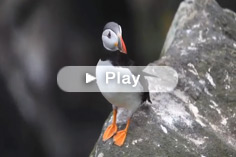

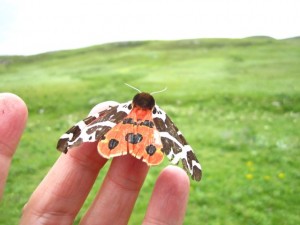

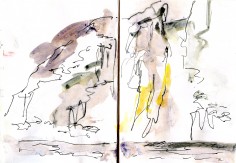
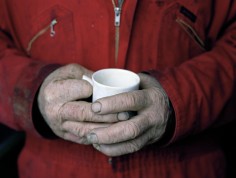
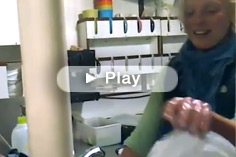


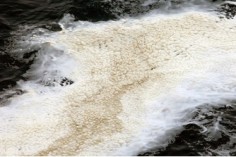
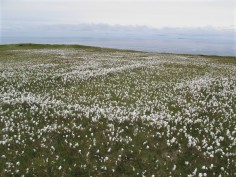

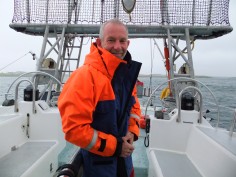








No Comments